- Aramco announces second quarter and half-year 2025 results Aramco
- Saudi Aramco second-quarter net profit drops 22% on lower revenue Business Recorder
- Saudi Arabian Oil Company Reports Earnings Results for the Second Quarter and Six Months Ended June 30, 2025 MarketScreener
- Manus on Markets: Saudi Aramco posts 10th consecutive quarter decline in profit thenationalnews.com
- Saudi Aramco Reports $50.9bn Net Income in H1 2025 Egypt Oil & Gas
Blog
-
Aramco announces second quarter and half-year 2025 results – Aramco
-
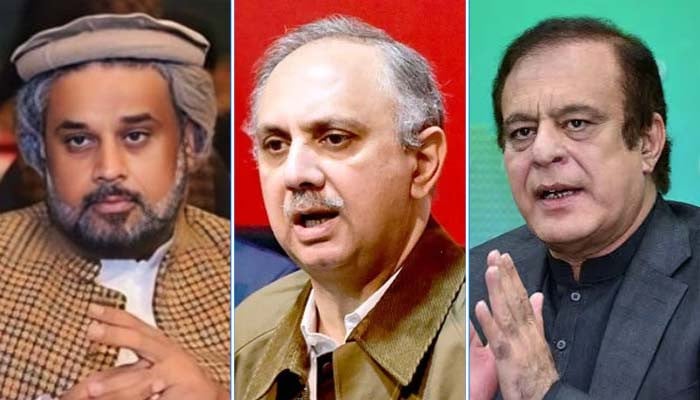
PTI parliamentarians Shibli Faraz, Omar Ayub, others disqualified
ISLAMABAD: The Election Commission of Pakistan (ECP) Tuesday issued disqualification notifications for Pakistan Tehreek-e-Insaf (PTI) parliamentarians, including the opposition leaders in Senate and National Assembly, Senator Shibli Faraz and Omar Ayub Khan, following their convictions in the May 9 riots case.
According to the notification issued by the electoral watchdog, an anti-terrorism court found lawmakers convicted the lawmakers and sentenced them to imprisonment.
Those disqualified include five members of the National Assembly, one senator, and three members of the Punjab Assembly.
The list includes Omar Ayub (MNA from NA-18 Haripur), Rai Hassan Nawaz (MNA from NA-143 Sahiwal-III), Zartaj Gul (MNA from NA-185 DG Khan-II), Rai Haider Ali (MNA from NA-96 Faisalabad-II), and Sahibzada Hamid Raza (MNA from NA-104 Faisalabad-X) from the lower house of parliament.
Punjab Assembly members Muhammad Ansar Iqbal (MPA from PP-73 Sargodha-III) Junaid Afzal (MPA from PP-98 Faisalabad-l), and Rai Muhammad Murtaza Iqbal (MPA from PP-203 Sahiwal-VI) were also de-notified.
The lawmakers were disqualified under Article 63(1)(h) of the Constitution (a person shall be disqualified from being elected [if] … he has been, on conviction for any offence involving moral turpitude, sentenced to imprisonment for a term of not less than two years).
The disqualification came days after a special anti-terrorism court (ATC) in Faisalabad sentenced several PTI leaders including Omar Ayub, Shibli Faraz, Zartaj Gul and others to 10 years in prison each in connection with a case registered in the aftermath of the May 9, 2023, violence at the Civil Lines Police Station.
In its verdict, the special ATC sentenced 108 individuals of the total 185 accused, which also includes Sunni Ittehad Council (SIC) chief MNA Sahibzada Hamid Raza, who has been handed 10 years imprisonment.
The back-to-back verdicts added to the legal woes of the former ruling party, which is holding protest demonstrations in different parts of the country to demand release of party founder Imran Khan, who completed two years in prison on August 5.
May 9 mayhem
The May 9, 2023, events refer to the violent protests that broke out in several parts of the country following the arrest of the PTI founder and saw attacks on public properties and military installations, including Corps Commander House Lahore, also known as Jinnah House.
The riots were triggered by the arrest of ex-premier Khan from the premises of the Islamabad High Court (IHC) in a graft case.
Several PTI leaders and workers were released on bail after their arrests, while many still remain behind bars.
The deposed prime minister, who was ousted from power via the opposition’s no-confidence motion in April 2022, has been behind bars since August 2023 as he was facing a slew of charges ranging from corruption to terrorism.
Continue Reading
-

Timon Benson celebrates the special bond he has with his dad
Like many first-generation immigrants, John’s life hasn’t been straightforward. At 26, he moved to the United Kingdom from Kenya, seeking a pathway to study, gain financial mobility and experience a new culture. “He worked his way up as a Nurse,” Benson explains. “He became an expert in mental health and went on to manage different departments. The work suited him because he’s incredibly caring. He took the job very seriously, putting in a lot of additional hours, understanding that people relied upon him and the decisions he made affected people’s lives and livelihoods.” As John got older, his health began to fluctuate, resulting in a lot of time spent in and out of the hospital. Through these challenging times, the camera gave Benson a way to deal with the overwhelming reality of his father’s diminishing health.
In January, after much rumination, John moved back to Kenya. His life in the UK had become quiet and isolated, accelerated by redundancy from a job he dedicated his life to. “One night, we sat together and had an honest conversation about his relationship with the two countries,” says Benson. “I reflected back to him the juxtaposition between his solitary life in the UK and his extraordinary social life in Kenya. He fills a room when he’s there, and everyone’s delighted to have him around. As he gets older, it becomes a question of where you would rather spend the rest of the time you have.”
Continue Reading
-

Isack Hadjar needs to ‘put it together when it matters the most’ as he misses out on points again in Hungarian Grand Prix
Isack Hadjar believes he needs to “put it together when it matters the most” during a Formula 1 weekend having just missed out on points in the Hungarian Grand Prix.
The French rookie was left a frustrated 11th in Budapest, having been unable to find a way ahead of Kimi Antonelli’s Mercedes in the closing stages.
It marks the fifth race in succession that that the 20-year-old has failed to finish in the points despite a positive start to his maiden campaign with Racing Bulls.
“So many positives to take,” said Hadjar when asked to reflect on his season ahead of the summer break.
“The car is there, I am fast, I just need to put it together when it matters the most. We’ve been very unlucky the last few races and there’s all signs to say that we’re going to have a good second half of the year, I’m sure.”
Hadjar qualified 10th for the race but admitted that Q3 was the only part of the weekend where he felt he underperformed, which in turn meant he was always stuck in traffic during a race where overtaking proved difficult.
“This weekend just feels so unfair because the other car scored points and we’ve been on it the whole weekend except when it mattered yesterday in Q3,” he said.
“Just a very frustrating race, the pace was very strong again but I was just being backed up by slower cars.”
Team mate Liam Lawson did finish in the points, making it four times in the last seven races, having improved on his P9 starting position to finish ahead of Max Verstappen at the chequered flag courtesy of a one-stop strategy.
“I think it’s been a pretty tough race,” he said. “It’s hard to time the pit stop when there’s this many cars on a small track like this.
“It’s always a bit nerve-wracking when you know it’s a very important part of the race but for us, our deg was really good and were able to have a strong race.”
Continue Reading
-

Death spiral of giant planet could explain rocky world origins
There’s a massive planet out there, far beyond our solar system, that’s speeding around its star so fast it completes an entire orbit in just 16 hours. It’s 870 light-years away and on a one-way path toward destruction.
Researchers from Macquarie University have tracked the slow-motion fall of this planet – TOI-2109b – and confirmed that it’s spiraling closer to its star.
A planet death spiral begins
TOI-2109b is what astronomers call an “ultra-hot Jupiter.” It’s nearly five times the mass of Jupiter and almost twice its size. But what really sets it apart is how close it orbits its star – even closer than Mercury orbits our Sun.
“Just to put it into context – Mercury’s mass is almost 6,000 times smaller than Jupiter’s, but it still takes 88 days to orbit our Sun,” said Dr. Jaime Alvarado-Montes, a Macquarie research fellow who led the study.
“For a huge gas giant such as TOI-2109b to fully orbit in 16 hours – it tells us that this is a planet located super close to its star.”
It’s the fastest orbit of any hot Jupiter ever found. And that speed is part of what’s sealing its fate.
Closing in on its star
Using 14 years of data from NASA’s TESS mission, ESA’s CHEOPS satellite, and ground-based telescopes, the team found that the planet’s orbit is shrinking and unstable.
By running the numbers through different models and comparing with direct observations, the team concluded that TOI-2109b’s orbital period is decreasing.
In the next three years alone, it could shorten by at least 10 seconds. That doesn’t sound like much – but in the world of orbital mechanics, it’s huge.
“This planet and its interesting situation could help us figure out some mysterious astronomical phenomena that so far we really don’t have much evidence to explain,” said Dr. Alvarado-Montes. “It could tell us the story of many other solar systems.”
Planets don’t live forever
Planets don’t live forever. But the way they die isn’t always clear – and it rarely looks the same twice. Some may be ejected from their solar systems entirely, flung into deep space after chaotic interactions with other planets.
Others might slowly spiral into their stars, especially if they orbit too close. And some get torn apart by gravity, stripped by radiation, or collide with other objects. Most of what we know about planetary death comes from simulations and theories.
Actual observations are rare, because the timescales are usually huge – far longer than a human lifetime. That’s what makes TOI-2109b so important. It offers a chance to catch a planet in the act of dying, rather than piecing together what happened long after it’s gone.
Ripped, swallowed, or stripped
Scientists see three possible endings for TOI-2109b. One, the star’s crushing gravity could pull it apart. Two, the star might swallow it whole as it spirals inward. Or three, it could have its outer gas layers stripped away by intense radiation, leaving behind a dense, rocky core.
That third outcome is especially interesting. If TOI-2109b ends up as a bare core, it could help explain the origins of some rocky planets found in other systems.
These stripped-down worlds might be the fossil remains of gas giants that got too close to their stars. The idea changes how we think about planetary life cycles.
A warning from deep space
TOI-2109b may be 870 light-years away, but what happens to it could reshape how we think about other worlds – including our own.
If gas giants can be torn apart or stripped down by their stars, it might explain why we find small, rocky planets in places where they shouldn’t exist. Maybe they’re just the hardened cores of giants that got too close.
Each orbit brings new clues. And the closer TOI-2109b drifts to its star, the more clearly we’ll see how violent – and unpredictable – planetary evolution can be.
The team isn’t done watching. In fact, the next few years could be the most revealing yet. They’ll keep tracking the orbit for signs that one of the planet’s three possible fates is beginning. It’s not often astronomers get to witness a planet mid-collapse.
TOI-2109b is giving us a rare look at a planet in real-time crisis – and it’s changing what we thought we knew about the life and death of worlds.
Image credit: NASA/CXC/M. Weiss
The full study was published in the journal The Astrophysical Journal.
—–
Like what you read? Subscribe to our newsletter for engaging articles, exclusive content, and the latest updates.
Check us out on EarthSnap, a free app brought to you by Eric Ralls and Earth.com.
—–
Continue Reading
-
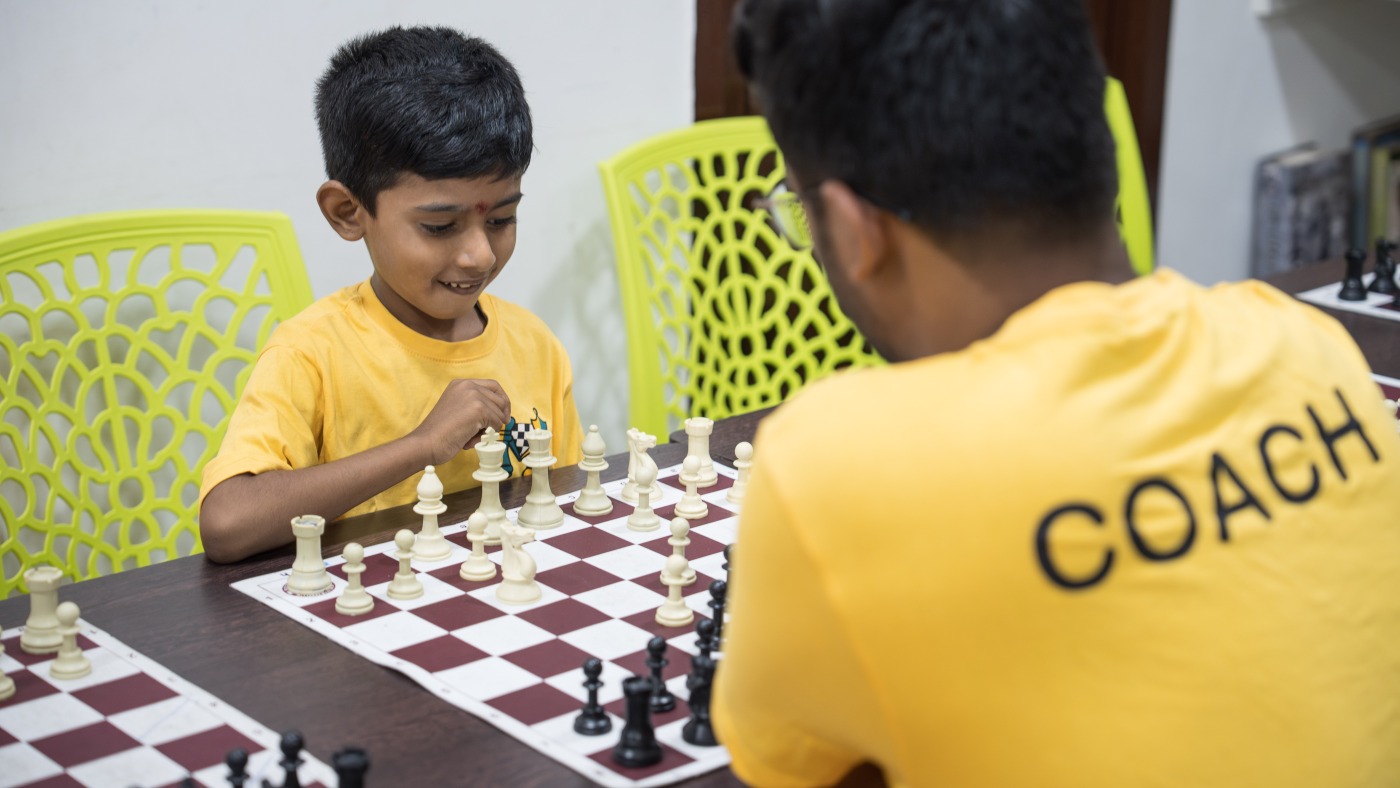
What's the secret to India's moves to conquer the global chess scene? : Goats and Soda – NPR
- What’s the secret to India’s moves to conquer the global chess scene? : Goats and Soda NPR
- D Gukesh recalls competing alongside Divya Deshmukh since age of eight, acknowledges her World Cup triumph: ‘We grew up together’ Firstpost
- ‘Thankfully, Was Never In A Situation Where…’: Deshmkh Reflects On Coping With Pressure At FIDE WWC News18
- No player should miss out on tournaments due to lack of funds, says CM Times of India
- Global chess is now in the era of Vishy’s children ESPN Singapore
Continue Reading
-

UK opens Chevening scholarships to Pakistani students
Applications are now open for Pakistani students aspiring to study in the United Kingdom under the UK Government’s Chevening Scholarships for 2025.
The fully funded programme offers one-year master’s degrees at leading UK universities and is open to mid-career professionals with at least two years of post-graduation work experience.
The Chevening scholarship covers tuition fees, airfare, visa costs, and a monthly allowance for living expenses.
Scholars will also benefit from academic and professional growth, global networking, and cultural exchange during their stay in the UK.
British High Commissioner to Pakistan Jane Marriott said the programme serves as a launchpad for Pakistan’s exceptional future leaders.
She encouraged those with leadership potential and a drive to make a difference to apply.
Applications will remain open from August 5 to October 7, 2025. Eligible candidates must demonstrate real-life examples of leadership, influence, and networking skills.
Established in 1983, Chevening has more than 60,000 alumni across 160 countries, including over 2,000 in Pakistan who have gone on to hold leadership roles in various fields.
Details and application instructions are available on the official Chevening website.
Continue Reading
-
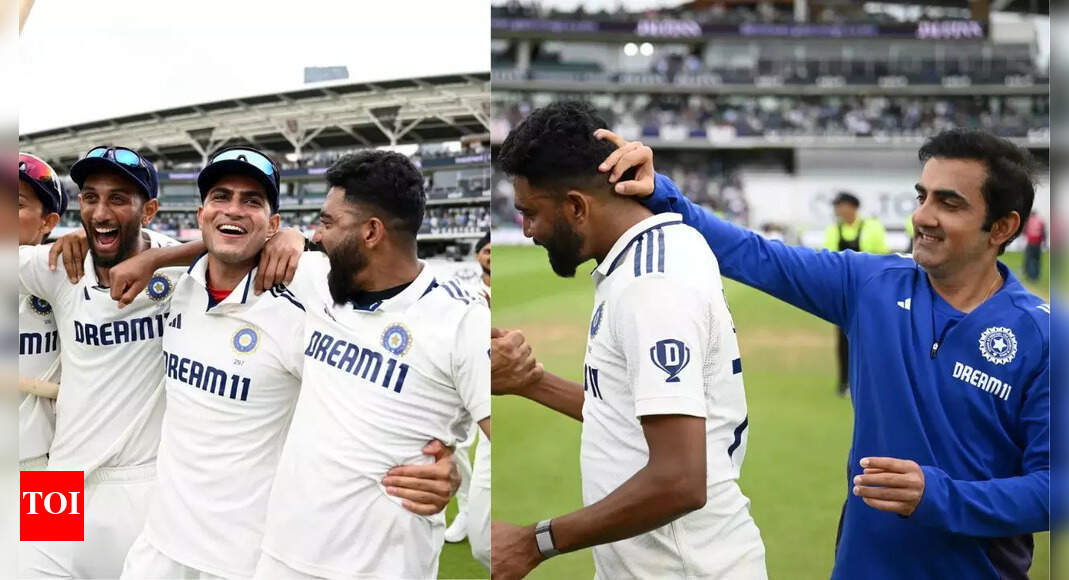
IND vs ENG: ‘Dominate’ – Gautam Gambhir’s bold message to Team India after victory in The Oval | Cricket News
India’s sensational six-run win at The Oval to draw the five-Test series 2-2 was more than just a result. It was a statement from Gautam Gambhir and his men. The emotions in the Indian camp reflected how much the team had invested in this fightback, especially under the leadership of Shubman Gill and the guidance of head coach Gambhir. In a video released by the BCCI, Gambhir’s fiery and heartfelt address to the team after the dramatic win caught widespread attention.
“The way this series has panned out 2-2 is an outstanding result. Congratulations to everyone. Remember, we’ll keep getting better, we’ll keep working hard, because if we keep doing that, we will dominate Test cricket for a very long time,” said Gambhir in the dressing room after the win at The Oval, to thunderous applause and cheers from the players. Gambhir continued by stressing the importance of team culture and pride in the dressing room atmosphere. “People will come and go, but the culture of the dressing room should always be like that. People want to be part of this culture – that is what we want to create.” He concluded by giving his side a well-earned breather. “Enjoy yourself. You can take a couple of days off. You guys deserve every bit of it, what you’ve achieved.” The win, which seemed unlikely when England began Day 5 needing just 35 runs with four wickets in hand, was made possible by a spirited bowling effort led by Mohammed Siraj, who claimed a five-wicket haul. It marked India’s narrowest-ever win by runs in Test history. The result helped India not only draw the Anderson-Tendulkar Trophy but also propelled them to third in the ICC World Test Championship 2025–27 standings. They now have 28 points from five matches and a points percentage (PCT) of 46.67.
Poll
Do you believe Shubman Gill will continue to lead India effectively in future matches?
For this young Indian side, the victory was a massive boost. It also served as a timely reminder that this team, under fresh leadership, is forging its own identity in the longest format.
Continue Reading
-
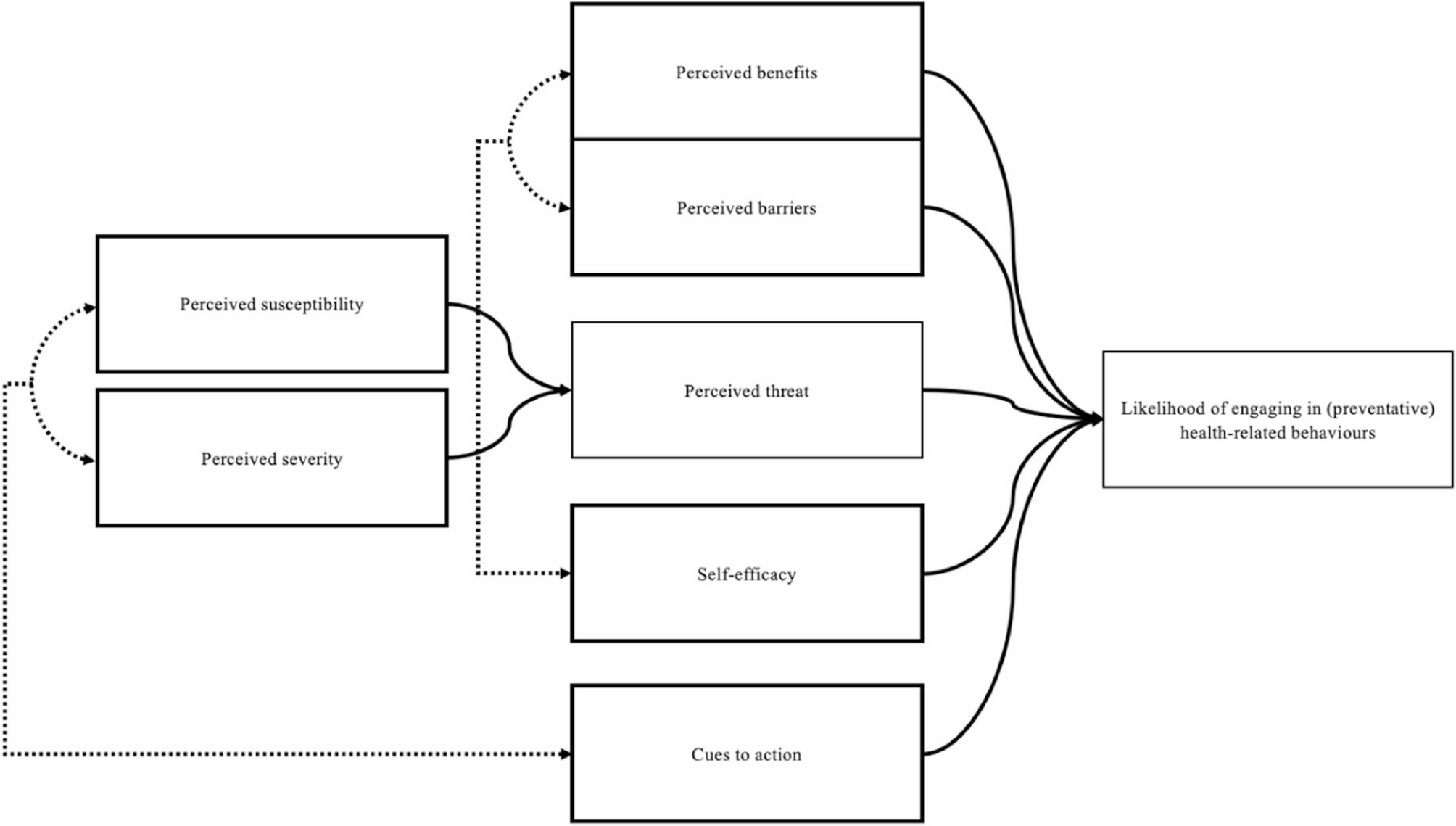
“We don’t care because we are not sick”: understanding youths perceptions of hypertension in urban South Africa | BMC Public Health
The findings of this paper provide critical insights into the social, cultural, and structural factors that shape young South Africans’ understanding of hypertension and their perceptions of prevention. The HBM concept of perceived threat (i.e., perceived susceptibility and perceived severity) suggests that individuals are more likely to take preventive action if they recognise a health threat as serious and as something they could develop [19, 20]. For many youth in this study, the low perceived severity of hypertension acted as a barrier to behaviour change despite youth perceiving high susceptibility. Although participants recognised their likelihood of developing hypertension in the future, participants in this study largely viewed their youth, good health, and lack of diagnosis as protective factors against threat of hypertension. This perception aligns with Elkind’s [21] concept of adolescent invincibility, which has been linked to a greater likelihood of engaging in risk behaviours [22]. This creates a paradox in how South African youth perceive hypertension, as while they view it as an inevitable part of their future, they do not see it as an immediate threat to their health, leading to a reluctance to engage in preventative or management behaviours.
Stress was also identified as a key psychological factor that further influenced participants’ lack of engagement with hypertension prevention. While few participants described hypertension itself as a major current stressor (often viewing it as a condition that affected “older people”), many acknowledged that stress more generally was prevalent in their lives and believed it could contribute to future health problems, including hypertension. In this context, some participants described deliberately avoiding thoughts about hypertension, as they believed that focusing on it could increase anxiety or even exacerbate the condition. This tendency to mentally distance themselves from health risks can be understood as a coping strategy aimed at emotional self-regulation. Rather than reflecting fear or active distress about hypertension specifically, these responses appear to reflect a pattern of cognitive disengagement: an effort to reduce psychological discomfort associated with confronting long-term health risks while navigating already stressful life circumstances. This aligns with the concept of avoidance coping, a strategy in which individuals manage distress by denying or distracting themselves from a health threat rather than actively addressing it [23, 24]. Evidence from South Africa shows that avoidance coping strategies (such as denial, distraction, or minimising perceived risk) play a critical role in shaping maladaptive health-related behaviours, as seen in people living with HIV, where internalised stigma predicted higher avoidant coping, leading to delayed antiretroviral therapy initiation and poorer health outcomes [23]. Similarly, in the context of hypertension, avoidant coping may diminish proactive health-seeking behaviours, reinforcing disengagement from prevention and treatment. Participants described distancing themselves from the risk of hypertension by emphasising their young age and perceived good health, avoiding health information they found confronting, or deferring lifestyle changes to a distant future. Chasiotis et al. [24] further highlighted that avoidant motivation reduces engagement with health information-seeking and problem-focused coping, leading instead to emotion-focused coping strategies such as denial or distraction rather than direct disease management and prevention. In this study, participants demonstrated these avoidant coping patterns through a preference for stress management practices, such as meditation and breathing exercises, rather than direct engagement with hypertension prevention strategies. While these approaches contribute to overall well-being, they may also serve as a form of psychological distancing. By focusing on managing stress in general rather than addressing specific behavioural risk factors (such as diet, physical activity, or blood pressure monitoring), participants may unintentionally reinforce inaction toward meaningful risk reduction. This indirect approach reflects a broader coping style oriented toward emotional relief rather than problem-solving, thereby limiting the likelihood of sustained health-promoting behaviours.
In addition to stress, this study found that some youth (particularly female youth) viewed a healthy lifestyle in terms of drinking water and a healthy diet as something “only for white people”. This perspective reflects how racial and cultural identities influence health behaviours, particularly in South Africa which where the legacy of apartheid continues to shape perceptions of health and wellness [25]. The transition from apartheid to a democratic society has resulted in a complex interplay between modern, Western health practices and longstanding traditional practices [25]. Within this context, some participants viewed health-promoting behaviours as culturally alien or associated with a racialised identity, contributing to resistance in adopting such practices. This perception is particularly significant given the documented links between poor dietary patterns and the prevalence of diseases like hypertension. These dynamics are not unique to South Africa; studies in England have similarly shown that cultural values and traditional food beliefs significantly shape health behaviours among minority groups [26]. Public health interventions often fail to resonate with these groups when they are not culturally adapted, ignoring the role of traditional foods, taste preferences, and social meaning of eating [26]. This underscores the need for culturally responsive health strategies that account for the socio-cultural context in which health behaviours are developed and sustained.
Further to the social and cultural influences, peer pressure also played a significant role in shaping participant’s health-related behaviours. Literature suggests that adolescent males, in particular, exhibit increased risk-taking due to a stronger peer group orientation [27]. In this study, however, both male and female participants described engaging in unhealthy behaviours (such as drinking alcohol, eating unhealthy foods or skipping exercise), not out of personal preference but as a way to maintain social inclusion. Several youth expressed fear of being judged, excluded, or labelled as “boring” or “different” if they made healthier choices. These accounts underscore how peer norms can create a powerful incentive to conform, often overriding individual efforts to adopt healthier behaviours. In such contexts, social belonging was often prioritised over long-term wellbeing, highlighting the importance of addressing peer dynamics in youth-focused health interventions.
A culture of social gatherings centered around high-calorie, processed foods, and limited physical activity reinforced these patterns of unhealthy lifestyle behaviours, such as frequent consumption of unhealthy food, habitual sedentary leisure activities, and the prioritisation of social acceptance over personal health. Some traditional cultural practices, such as the expectation to consume large portions of energy-dense foods during family or community events, were perceived as contributing to health risks. In line with findings from Buksh et al. [28]participants in this study also shared that overconsumption of food during social gatherings was common and often encouraged. Social norms played a powerful role in shaping both dietary and physical activity behaviours, as supported by a recent systematic review which found that such norms consistently drive directional changes in youth behaviour [29]. This is particularly important given that opportunities for physical activity are not always within the control of young people. According to the Theory of Expanded, Extended, and Enhanced Opportunities (TE), youth often have limited automony over when, wehere, and how they are pgysically active due to to the structured environments in which they live [30]. Without intentiaonl efforts to expand, extend, or enhance these opportunities, and to ensure youth are supported and motivated within them, it becomes difficult for healthy movement behaviours to compete with prevailing sedentary norms. As Monterrosa et al. [31] note, food choices are deeply influenced by cultural, social, and psychological factors, making dietary patterns both a personal and social expression of identity. This complex web of influences highlights the difficulty of adopting healthier eating habits in environments where traditional and social expectations outweigh concerns about nutritional health.
Many participants learned about hypertension through observing family members or neighbours, with their views influenced by how those around them managed, or failed to manage, the condition. For some, hypertension was perceived as a minor, manageable issue, particularly when individuals neglected medication adherence yet appeared to function normally. This was especially true for those who remained asymptomatic, mirroring findings from Jimmy & Jose [32]which highlight that non-compliance with chronic disease medications is most common when patients do not experience unpleasant symptoms. In fact, medication adherence rates for chronic conditions like hypertension often drop significantly when symptoms are absent, as patients perceive the disease as less urgent or severe. As a result, some individuals became complacent and skeptical about the true severity of the disease. This also aligns with Nouhravesh et al. [33]who observed that asymptomatic participants often did not perceive their condition as a real threat, showing little effort to understand or manage it until symptoms appeared, further contributing to a false sense of security regarding the potential risks of hypertension. However, others who had witnessed serious complications, such as strokes, kidney failure, or premature death, regarded hypertension as a significant and life-altering condition.
A major challenge identified by youth was the secrecy surrounding hypertension in their families and communities. Participants noted that older relatives often concealed their diagnosis, rarely spoke about the condition, or disclosed it only after severe health events such as strokes or death. This silence around the disease left youth without firstand exposure to what living with hypertension entails, limiting their understanding of its long-term consequences. Many interpreted the secrecy as rooted in stigma; specifically, fear of judgement or perceptions of weakness, which created cultural taboos around discussing chronic illness. This dynamic mirrors findings in studies of dementia-related stigma in South Africa, where internalised shame and fear of social rejection led families to avoid disclosure and isolate affected individuals [34]. For youth in this study, such patterns of silence contributed to a low perceived threat of hypertension and weakened motivation to engage in preventive behaviours. Without visible role models openly managing the condition, hypertension remained abstract and distant; as something that happened to ‘other people’ or only became relevant in old age.
Participants frequently discussed how family members shaped their food choices and health habits, both positively and negatively. Some shared that when parents prepared meals or encouraged exercise, it was easier to adopt and maintain healthy behaviours. Family structures and systems are essential in shaping food choices, as they establish the foundation for lifelong eating habits [31]. These food practices are primarily learned through the transmission of behaviours and norms from parents to children, influencing not only what is eaten but also how and when meals are consumed [31]. When families model and encourage healthy behaviours (such as preparing nutritious meals, promoting balanced diets, and supporting physical activity) youth found it easier to adopt and sustain these habits [31]. However, other participants described family environments where unhealthy eating patterns (such as frequent fried foods or sugary drinks) were the norm, and attempts to eat differently were dismissed as strange or ungrateful. Youth highlighted the tension between wanting to change and the difficulty of doing so in households where health was not prioritised. When unhealthy patterns were normalised, or when support for change was lacking, participants reported significant barriers to making healthier choices. This dynamic is especially relevant in the South African context, where many youth continue to live at home and are deeply influenced by their families’ attitudes and behaviours. As noted by Bottorff et al. [35]the family unit plays a crucial role in shaping healthy behaviours, especially in childhood, by providing opportunities for physical activity and healthy eating. While their study focused on children, this dynamic remains relevant for youth, as family caregivers continue to shape lifestyles choices and help address modifiable risk factors, such as poor diet and physical inactivity, that contribute to long-term health issues like hypertension. This is applicable to the current study, which shows how family norms, modelling, and support systems can either enable or constrain youth’s ability to adopt preventative behaviours, underscoring the importance of targeting family dynamics in youth-focused health interventions.
These results highlight the complex, multilevel factors that shape food and lifestyle related choices, where interactions between youth and their environment influence health-related behaviours [31]. While environmental factors, such as food marketing and availability, play a crucial role, biological factors like innate preferences for sweet, salty, and high-fat foods (which are deeply rooted in our biology) also drive individuals toward unhealthy options [36]. The food industry exacerbates this dynamic by marketing highly palatable, energy-dense foods that stimulate pleasure receptors in the brain, reinforcing unhealthy eating habits [37]. Youth in this study described pervasive advertising for fast food and sugary drinks as a persistent external cue, normalising unhealthy consumption and making it harder to prioritise healthier options. Broader structural factors, including limited access to affordable healthy food, lack of fitness resources, and societal norms favouring convenience over health, create systemic barriers to adopting healthier lifestyles. Additionally, barriers to healthcare access, such as long wait times and a focus on treatment (medication) rather than prevention, deter youth from engaging in proactive health management, with perceptions that clinics are only for severe illness further delaying the adoption of preventative care [38]. These combined factors contribute to unhealthy dietary behaviours and limited engagement with health-services, increasing the risk of hypertension in South African youth.
Lastly, the findings of this paper demonstrate that youth are looking to community structures such as schools, churches, clinics, and government institutions in supporting youth efforts to adopt healthier behaviours. Participants emphasised the need for greater dissemination of accurate health information and the creation of environments that actively facilitate positive change. While churches are highlighted in this paragraph to illustrate the role of these institutions, the findings can also be applied to schools, clinics, and government organisations, as they share a similar potential to influence health outcomes. Evidence, such as the Impilo neZenkolo (‘Health through Faith’) programme [39]demonstrates the potential of church-based interventions to address health challenges in lower income communities. Further to this, churches have also played a key role in promoting health in South Africa, as seen in HIV prevention efforts [40]underscoring their potential as important partners in public health initiatives. However, while structures such as churches hold promise as powerful agents of health promotion, participants also acknowledge their capacity to spread misinformation when not used correctly. Churches, for example, were identified by participants as both a source of guidance and a barrier; while some invited health experts to educate congregants on disease prevention and healthy living, others promoted the idea of praying illness away. Expanding on the former point, in this study, youth advocated for the inclusion of diverse stakeholders, and emphasised the importance of moving beyond one-size-fits-all health campaigns. They call for collaborative efforts that engage influential community figures such as doctors, religious leaders, media personalities, and government officials to co-create sustainable and meaningful preventive health initiatives.
Limitations
This study has limitations that should be considered when interpreting. First, as a qualitative study conducted in a specific urban context (Soweto), the findings are not intended to be generalised to broader populations. Instead, their transferability depends on the relevance and resonance of the themes within similar sociocultural and economic settings. While the sample offers rich insights, participants were drawn from a single urban area, which may limit the applicability of the findings to rural areas or other South African communities with different contextual realities. Second, although social desirability bias is a known consideration in qualitative research, this study is further shaped by the dynamics between interviewer and participant. Interviews were conducted by trained researchers with local contextual understanding, but differences in age, gender, or perceived authority may have influenced participants’ willingness to disclose sensitive or socially undesirable information. Reflexivity was practiced throughout data collection and analysis; however, the influence of researcher positionality and the interview setting on data richness and disclosure remains a limitation. Lastly, while the cross-sectional design aligns with the explortatory goals of qualitative inquiry, it limits the study’s ability to capture changes in young people’s perceptions over time. Youth perspectives on hypertension and prevention behaviours may evolve due to shifting life circumstances, social influences, access to new information, or changes in health status. Further longitudinal qualitative research could explore how these perceptions are shaped and reshaped over time.
Continue Reading
-
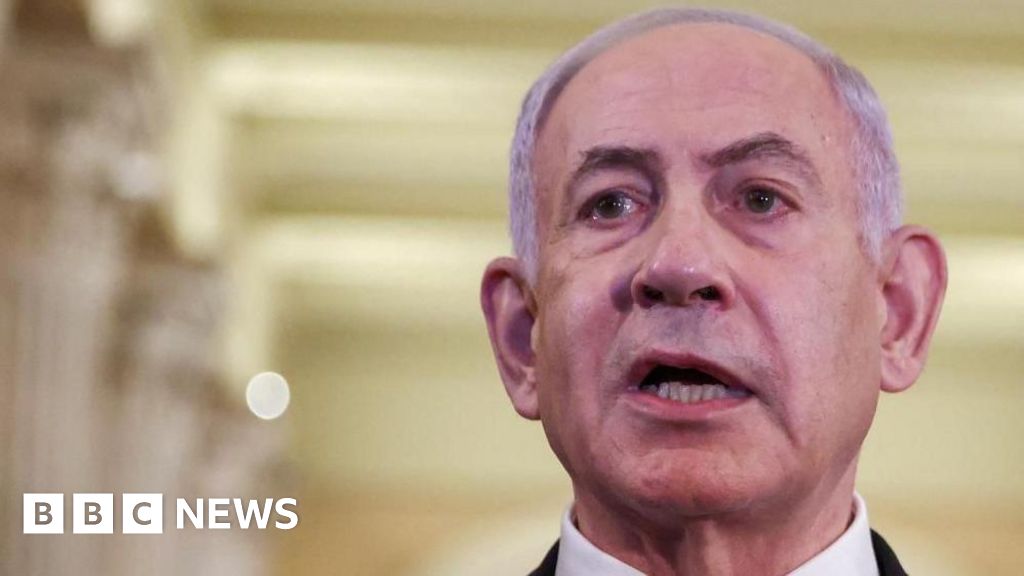
Netanyahu to propose full reoccupation of Gaza, Israeli media report
Yolande KnellBBC News, Jerusalem
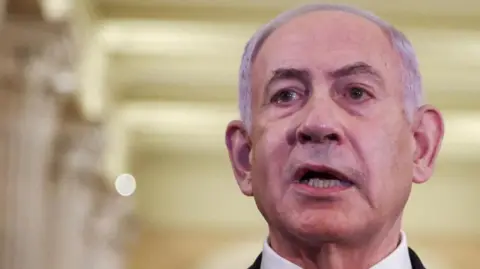 Reuters
ReutersNetanyahu’s plan reportedly faces opposition from military chiefs Israeli Prime Minister Benjamin Netanyahu is to propose fully reoccupying the Gaza Strip when he meets his security cabinet, Israeli media say.
“The die has been cast. We’re going for the full conquest of the Gaza Strip – and defeating Hamas,” local journalists quote a senior official saying.
Responding to reports that the army chief and other military leaders oppose the plan, the unnamed official said: “If that doesn’t work for the chief of staff, he should resign.”
The families of hostages fear such plans could endanger their loved ones, with 20 out of 50 believed to be alive in Gaza, while polls suggest three in four Israelis instead favour a ceasefire deal to return them.
Many of Israel’s close allies would also condemn such a move as they push for an end to the war and action to alleviate a humanitarian crisis.
Within Israel, hundreds of retired Israeli security officials, including former heads of intelligence agencies, issued a joint letter to US President Donald Trump on Monday, calling for him to pressure Netanyahu to end the war.
One of the signatories, ex-domestic intelligence agency chief Ami Ayalon, told the BBC that further military action would be futile.
“From the military point of view, [Hamas] is totally destroyed. On the other hand, as an ideology it is getting more and more power among the Palestinian people, within the Arab street around us, and also in the world of Islam.
“So the only way to defeat Hamas’s ideology is to present a better future.”
The latest developments come after indirect talks with Hamas on a ceasefire and hostage deal broke down and Palestinian armed groups released three videos of two Israeli hostages looking weak and emaciated.
The footage of Rom Blaslavski and Evyatar David, both kidnapped from the Nova festival on 7 October 2023, has shocked and appalled Israelis. David is shown digging what he says is his own grave in an underground tunnel.
There has been some speculation that the latest media announcements are a pressure tactic to try to force Hamas into a new deal.
Israel’s military says it already has operational control of 75% of Gaza. But under the proposed plan it would occupy the entire territory – moving into areas where more than two million Palestinians are now concentrated.
It is unclear what that would mean for civilians and for the operations of the UN and other aid groups. About 90% of Gaza’s 2.1m people have been displaced, some repeatedly, and are living in overcrowded and dire conditions. Humanitarian groups and UN officials say many are starving, accusing Israel of impeding the distribution of crucial aid.
The Israeli military has previously held back from some areas, including parts of central Gaza, because of an assumption that there are living hostages held there. Last year, six Israeli hostages were executed by their captors after ground forces moved in.
There has not been a formal response but officials from the Palestinian Authority, which governs parts of the occupied West Bank, denounced the Israeli proposal, calling on the international community to intervene to prevent any new military occupation.
Palestinians point out that far-right Israeli ministers have been openly advocating for the full occupation and annexation of Gaza and ultimately want to build new Jewish settlements there.
In 2005, Israel dismantled settlements in the Gaza Strip and withdrew its forces from there.
But alongside Egypt, it maintained a tight control of access to the territory.
The new occupation idea comes amid growing international moves to revive the two-state solution – the long-time international formula to resolve the decades-old Israel-Palestinian conflict. It envisages an independent Palestinian state being created alongside Israel in the West Bank and Gaza Strip with East Jerusalem as its capital.
Last week, the UK and Canada joined France in announcing conditional plans for recognising a Palestinian state.
The Israeli PM is now expected to meet with key ministers and military leaders to decide next steps in Gaza. Israeli army radio says they are due to discuss initial army plans to surround the central refugee camps and carry out air strikes and ground raids.
Netanyahu said he would convene a full security cabinet meeting this week.
Israeli media commentators have voiced scepticism and drawn attention to the practical military, political and diplomatic challenges. Writing in the Yedioth Ahronoth newspaper, Nahum Barnea says: “Netanyahu has never taken a gamble on this scale before.”
He notes that the Israeli PM has repeated his vow to achieve all of his war goals.
“But after 22 months of bloody fighting, it is hard to take those kinds of promises seriously. It seems that Netanyahu has just one objective in the war in Gaza, to prolong the war.”
Israel launched its military offensive in Gaza in response to Hamas’s attack on southern Israel on 7 October 2023, in which about 1,200 people were killed and 251 others taken to Gaza as hostages.
At least 61,020 Palestinians have been killed by Israeli forces in Gaza since then, the Hamas-run health ministry says.
Continue Reading